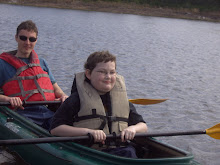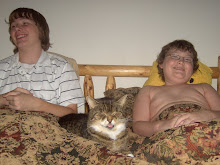We were ofcourse warned at the beginning, not to do our own research, and for good reason, most information is either out of date or inaccurate. Did we listen? Certainly not. I remember the first document I read after being released from hospital (following diagnosis) quoted a 40% survival rate for t-cell. Then, and to much relief, I noticed the date it had been written!
Before Scott's confirmation of ALL sub type it was presumed he would be pre-b, a survival rate in the high 80 percentage range was given. A few days into treatment t-cell was confirmed and and 5 year event-free survival (event being induction death/relapse etc) dropped to between 70 and 75 percent.
I have since questioned our doctors about this figure as it would seem that survival for t-cell is very much on the increase. One of the doctors has agreed and said latest evidence is showing t-cell survival to be getting close to pre-b. This is all down to the disease being recently (within the last 10 years or so) recognised as a much more aggressive subtype and therefore requiring heavier drugs, a shorter break between cycles and radiation. It is also of interest that a specific gene has now been identified which may play a part in future treatment and an even better success rate.
Having said all this, I am still very skeptical at the validity of statistics and the results of trials. I have heard too many whispers as to the ethics involved, the 'spin' and recruitment of patients.
It is a cruel disease, physically and mentally draining, year after year. Some children have been in treatment for a great many years and too many dont make it. At the end of the day the odds mean nothing. Survival is either 100% or 0%. Every child is a statistic one one.
Study results of incorporating high dose methotrexate, with leucovorin rescue, into the protocol. Obviously this increased survival and the phase III study is now the common treatment for t-cell....
Improved Event-Free Survival (EFS) with High Dose Methotrexate (HDM) in T-Cell Lymphoblastic Leukemia (T-ALL) and Advanced Lymphoblastic Lymphoma (T-NHL): a Pediatric Oncology Group (POG) Study.
Sub-category:
Pediatric Lymphoma/Leukemia
Category:
Pediatric Oncology
Meeting:
2001 ASCO Annual Meeting
Abstract No:
1464
Citation:
Proc Am Soc Clin Oncol 20: 2001 (abstr 1464)
Author(s):
Barbara Asselin, Jon Shuster, Michael Amylon, Edward Halperin, Robert Hutchison, Steven Lipshultz, Bruce Camitta, Univ of Rochester Medical Center, Rochester, NY; Univ of Florida, Gainsville, FL; Stanford Univ, Palo Alto, CA; Duke Univ, Durham, NC; SUNY Syracuse, Syracuse, NY; Midwest Children's Cancer Center, Milwaukee, WI.
Abstract:
Although lymphoid malignancies with T-cell immunophenotype are associated with distinctive clinical and biologic features, true lineage specific treatment has not been identified. The Dana-Farber Leukemia Consortium (DFCI) series of regimens, in use since 1981, showed excellent outcomes for patients with advanced T-cell malignancies. The results of a recent trial of the Berlin-Frankfurt-Muenster Group suggested that HDM was beneficial in treatment of T-ALL. The currently ongoing Phase III trial, POG 9404, was designed to determine the effectiveness of 4 doses of HDM when added to a multi-agent chemotherapy backbone modified from the DFCI protocol. T-ALL and T-NHL patients were randomized at the time of diagnosis to the standard arm with or without HDM (5 Gm/m2) and leucovorin at weeks 4, 7, 10, and 13 of therapy. A second randomization assigned patients to treatment with or without dexrazoxane, but these results remain blinded. Between 6/96 and 9/00, 221 and 220 eligible patients were randomized to No HDM and HDM therapy, respectively. The observed (obs) and expected (exp) number of treatment failures are shown below. The logrank Z statistic at the interim analysis of 9/00 was 3.12, which exceeded the O'Brien-Fleming bound of 2.89, based on 74 of 123 planned failures [p value = 0.0018 (two-sided)]. Three-year EFS (SE) are 72.2% (6.7%) vs. 86.0% (5.6%) for the No HDM and HDM groups respectively. We conclude that addition of HDM to this chemotherapy regimen, results in improved EFS for these patients due to decrease in occurrence of induction failure and CNS relapse.
Group Obs Exp* Relapses BM/CNS/BM+CNS Induction Failures
No HDM 49 35.5 29 (8/13/4) 16
HDM 25 38.5 15 (8/5/0) 8
*Adjusted for dexrazoxane randomization
An article on Notch1 which I am going to have to ask Dr Tebbi about...
http://bloodjournal.hematologylibrary.org/cgi/content/full/108/4/1151















































No comments:
Post a Comment